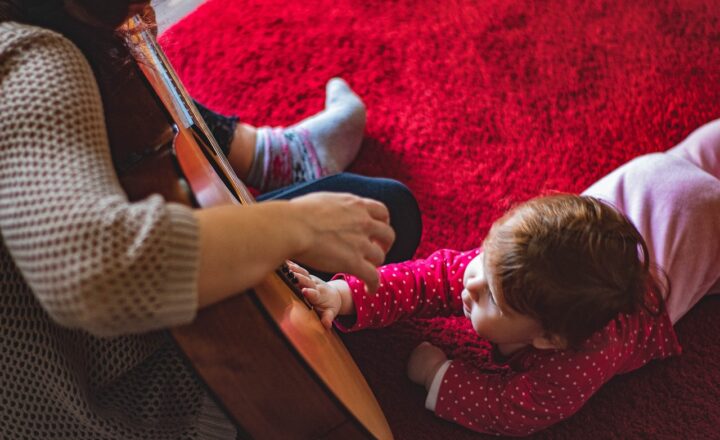Why Teaching Gratitude Should Start Early
November 16, 2024

In a world that often emphasizes instant gratification and materialism, the importance of teaching gratitude to children cannot be overstated. Early childhood is a crucial time for developing character traits, and gratitude is a foundational quality that shapes children into empathetic and responsible adults. This article delves into why teaching gratitude should start early and outlines practical steps parents and educators can take to instill this vital value in young minds.
Understanding Gratitude: The What and Why
Gratitude is not just a polite response to receiving gifts; it is a complex emotion that involves recognition and appreciation for what one has, as well as the acknowledgement of the contributions of others. Studies show that gratitude enhances mental health, fosters resilience, and improves overall well-being. Children who learn to be grateful are more likely to develop positive relationships, perform better academically, and contribute positively to their communities.
Teaching gratitude early sets the groundwork for these benefits. By instilling this quality at a young age, children can cultivate a lifelong habit of appreciation that reduces entitlement and enhances their ability to empathize.
The Science Behind Gratitude
Research in psychology reveals that expressing gratitude has profound effects on both mental and physical health. According to a study published in the Journal of Happiness Studies, individuals who routinely engage in grateful thinking are likely to:
- Experience greater happiness and life satisfaction.
- Have a lower incidence of depression and anxiety.
- Enjoy better sleep quality and overall physical health.
Children who understand and practice gratitude tend to approach life with a more positive outlook, leading to better social interactions and emotional intelligence.
How to Teach Gratitude to Children
Integrating the concept of gratitude into the lives of young children can be both simple and effective. Here are some practical strategies that parents and educators can employ:
1. Model Grateful Behavior
Children learn by imitation. When adults express gratitude regularly—whether saying “thank you” for a small favor or appreciating a family meal together—they model this behavior for children. Verbalize gratitude openly and demonstrate appreciation in everyday interactions. For example:
- Thank your partner for their support while preparing dinner.
- Appreciate the beauty of nature during a walk and point it out to the children.
- Express gratitude toward children for their efforts in completing chores or homework.
2. Create a Gratitude Jar
A gratitude jar is an engaging and visual way for children to embrace gratitude. Here’s how it works:
- Keep a jar in a prominent place in the home.
- Each family member can write down things they are grateful for on small pieces of paper and add them to the jar regularly.
- Set aside time as a family to read the notes and reflect on the blessings in everyone’s lives.
This practice not only reinforces gratitude but also fosters family bonding, as everyone contributes to the moments of appreciation.
3. Encourage Expressive Writing
As children grow, facilitating opportunities for them to express their thoughts about gratitude through writing can be powerful. Encourage older children to keep a gratitude journal where they can write down three things they are grateful for each day. This practice helps to shift focus from what they don’t have to appreciating what they do. Incorporate this into the evening routine to promote reflection before bedtime.
4. Volunteer Together
Volunteering as a family can instill a sense of gratitude through the experience of giving to those in need. Engage in community service projects such as:
- Helping at a local food pantry.
- Participating in community clean-up days.
- Visiting nursing homes or shelters to share kindness and companionship.
These experiences allow children to see the impact of generosity and how fortunate they are, reinforcing their understanding of gratitude.
5. Use Books and Storytelling
Reading children’s books that embody the theme of gratitude can stimulate discussions about the concept. Choose stories that highlight characters appreciating what they have, expressing thanks, and helping others. Consider titles like:
- “The Thank You Book” by Mo Willems
- “Thanks a Million” by Nikki Grimes
- “Bear Says Thanks” by Karma Wilson
After reading, encourage children to discuss what they learned about gratitude from the characters and how they can apply those lessons in their own lives.
The Long-Term Benefits of Teaching Gratitude
Teaching gratitude early sets children on a path toward a more fulfilling life. Here are a few long-term benefits:
- Enhanced Social Skills: Grateful children tend to build stronger friendships, as appreciation fosters kindness and promotes cooperative behavior.
- Improved Academic Outcomes: Studies have indicated that children who practice gratitude have higher self-esteem and better academic results due to increased motivation and resilience.
- Reduced Risk of Mental Health Issues: Cultivating gratitude early can lower the risk of anxiety and depression in later years, as grateful individuals tend to cope more effectively with challenges and setbacks.
By teaching gratitude, we are equipping children with a tool that enhances their emotional intelligence, allowing them to navigate the complexities of life with a positive and appreciative mindset.
Conclusion
In conclusion, gratitude is a critical skill that should be nurtured from an early age. By adopting simple practices that emphasize appreciation, families and educators can empower children to develop an attitude of gratitude that serves as a buffer against life’s challenges and enriches their overall experience. As we nurture gratitude in our youth, we are essentially investing in a kinder and more compassionate future, one child at a time.
Let us make it our mission to teach our children that the act of being grateful not only enriches their lives but also transforms the world around them for the better.







